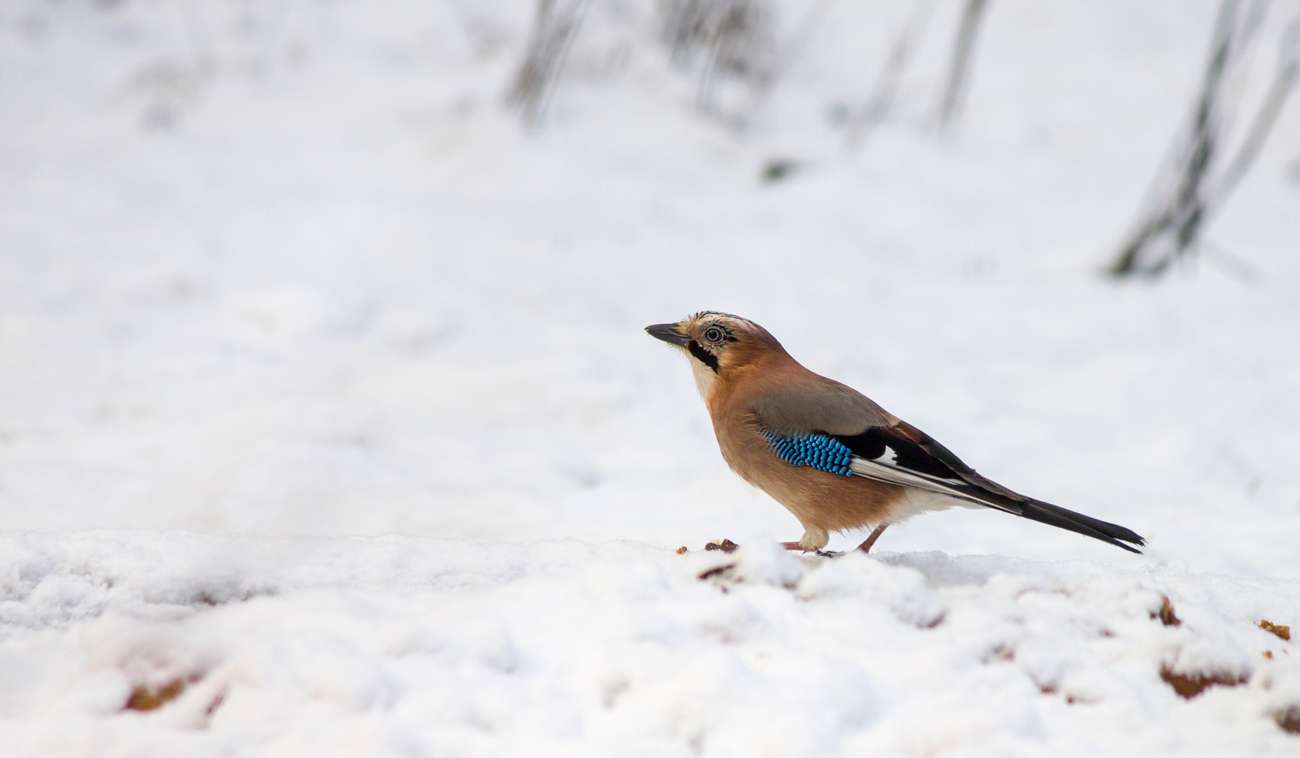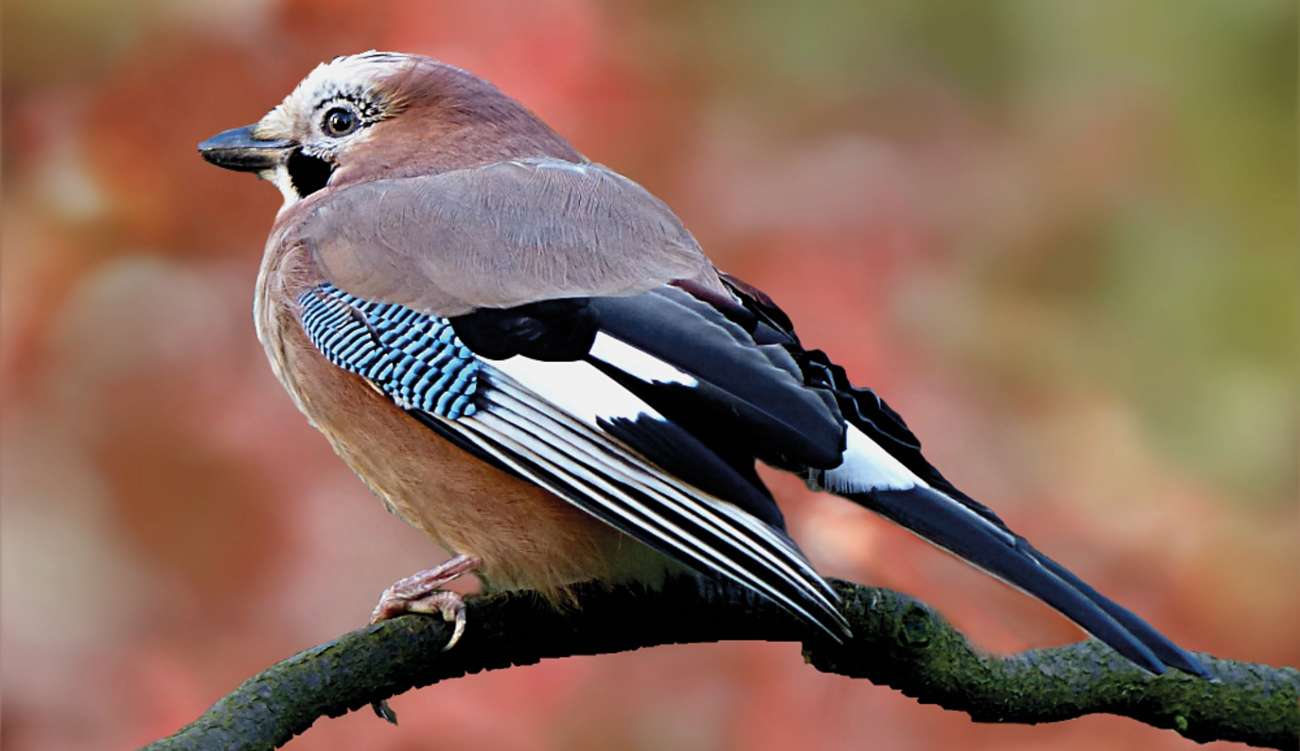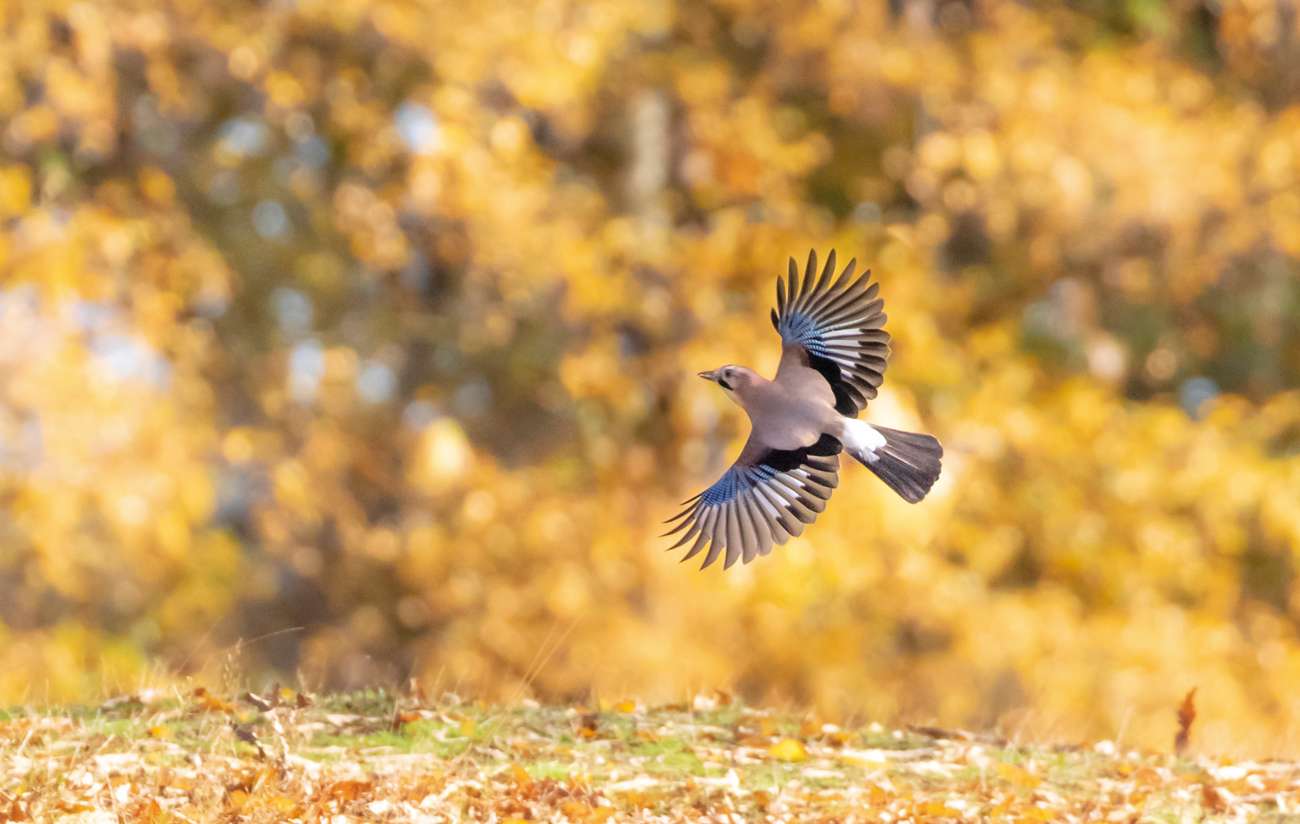
Jay searching for food (Garrulus glandarius)
I saw this outrageously dressed fella the other day and by the amount of food he was transporting away you’d think another lockdown was imminent.
Mr Pink made numerous return visits to ‘the shops’ over the space of three hours and was back for the umpteenth time as it started to get dark.
Storing up for the future. Well, winter is on the way and it might be a harsh one. Best take no chances in case the snowy weather stops you getting out. Make sure you’ve got plenty of food at hand.
Come to think of it, ‘he’ might have been Mrs Pink – you never can tell with these noisy visitors to the high street. They wear the same clothes.
October is when we see them most as they gather up to 5,000 acorns each from our oaks and fly off over a wide area to bury their stash in a variety of larders deep in the ground or a crack in a tree. They never find them all again so they play a useful role in planting trees for the next generation.
Jays, a member of the Crow family, are a moderately common resident around here and do not generally venture far afield from the woodlands they mostly prefer. I don’t blame them. Who wants to move and leave behind a full freezer?
Look out for them this month as they venture more into gardens, announcing their presence with a raucous grating call, often uttered twice.

Jay (Garrulus glandarius)
We do not usually see them so closely but around now they throw usual caution to the wind in their search for what could well be the same dinner menu for Christmas, New Year’s Eve, Burns’ Night and Valentine’s Day.
The Jay is around the size of a Jackdaw but, for looks, leaves it in the shade. What hits you first is its overall pinkness.
And then on closer inspection you see the black moustache – featured by both sexes – and striking cobalt blue edgings to the wings, known as the primary and inner greater coverts. These are delicately laced with tiny glossy black stripes that form a chequered pattern.
When it is flying away, which is what invariably happens quite quickly once it spots you, its mainly black and grey wings spread to reveal white patches, a black tail and a distinctive white rump.
For a bird that is a bit of a bully and likes causing a disturbance it is notably shy of humans. But, as with our own species, that’s often the case with bullies. With Jays it is perhaps to be expected though due to a long history of being ‘dealt with’ by gamekeepers.
Our numbers may be bolstered by an influx of continental birds if the acorn crop fails in Europe but they could be disappointed if the apparent lack of acorns this year, compared to last, is widespread.
If you go right across Europe then Jays can be found in every country, even as far away as the Himalayas and Japan. But the further east you go the more variable they become. The ones here have a few black flecks on the pinkish/white crown but I noted in Turkey that Mr and Mrs Pink had become Mr and Mrs Black Beret and had much greyer backs.

Jay in flight
Some authorities consider there could be as many as over 40 sub-species of this bird and sorting out all the differences would be a challenge too far for me. I was once privileged to bump into one of the best birders on earth – Hadoram Shirihai – one night in a bird observatory (of course) on the other side of the world.
He’d just cooked some tuna for supper and had all the windows open to get rid of the smell. As we were the only birders staying there I was able to spend some informative time with him.
As we chatted over a strong coffee, through a misty mixture of flying insects attracted by the lights, he surprised me by confiding that one of the most boring birding times he’d ever had was in England. Looking at Jays.
This was at the Natural History Museum in Tring, where he was researching these birds for a book. There he apparently spent two weeks, and took up much floor space, gallantly trying to identify the differences around the world. Not a job I would envy.
With so much variety, even in the same geographical areas, pinning down the species into its types around the world was a huge challenge. He concluded only 11 races, recognised in four main groups, were diagnosable.
I’m glad we’ve only usually got the local variety to contend with. Scientifically speaking it is aptly named Garrulus (chattering) glandarius (of the acorn) but be careful you don’t dismiss its variety of calls for something else.
If you think you hear a Tawny Owl hooting during the day then don’t be tempted to count it unless you see it. Our ‘screamer of the woods’ does a brilliant impression of this hunter, possibly to try and ward off its own enemies.
It also can mimic a phone and its repertoire extends to other small birds and even a cat. So if you hear your lost pet is calling from a nearby wood, I could not guarantee you will find it there. You may just be going Jay walking.
Twitter – @Crane_Spotter
Click here to see all of Robin Stride’s previous Crane Spotters.











